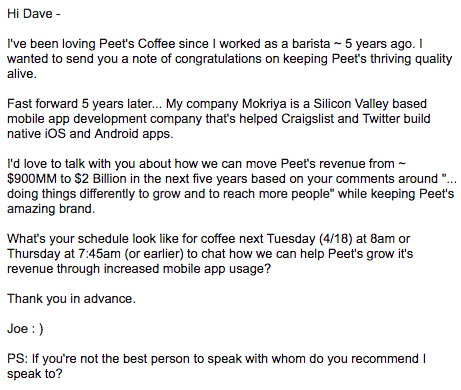Over the years I have worked alongside sales teams in a wide range of fields. No matter what the field, I have picked up on a couple of observations and commonalities that hopefully will aid you in making changes that can breathe new life into your sales team and sales cycle. Not to mention your all-important sales commissions checks!
Mistake #1:
There is a disconnect between SDRs and AEs (your “Closers”) that is resulting in a potentially massive loss of sales.
From my personal experience, using non-professionals (e.g., college students who work on a part-time basis) or outsourcing sales development to call centers might seem like a great place to cut costs, but it often results in sales loss due to frustration and a lack of collaboration with Account Executives (AEs).
Consider the following when management doesn’t place a priority on sales development as a profession:
Incentives and compensation are not aligned to motivate your sales team.
Prospecting fear is very real. Reps will struggle (and often fail) if not given the proper education and time to overcome their fears and see success.
Account Executives won’t trust the demos or appointments setup from SDRs who don’t have a handle on the company’s ideal customer profile. This leads to wasted time and money.
The resulting pipeline will look one of two ways: (1) It will be full of unqualified prospects giving you the perception that future revenue will accelerate, but in reality is full of prospects who will never buy. Or (2) The pipeline is bone dry.
SOLUTION:
Management teams must invest, educate, and develop full-time professional SDRs.
That’s where a professional SDR steps in to crush it! Unlike low wage individuals who are social selling on LinkedIn 25 hours a week for that hourly paycheck, good SDRs will take pride in their craft. Better SDRs will have cleared the hurdles of fear and rejection which fill sales graveyards with fired or laid-off workers convinced that “sales just isn’t for them”.
[Tweet “”Management teams must invest, educate, and develop full-time professional SDRs.” #FlipMyFunnel”]
Mistake #2:
Management believes more cold emails will solve their lead generation problems, aka “spray and pray!”
Now that we understand why hiring professional SDRs is a much better investment than uninvested college interns or outsourced labor, let’s look at breaking the cycle of management expecting SDRs to “spray“ cold emails while “praying” that will solve the company’s lead generation problems.
First, let’s get a working definition of “cold email:” Cold email is a cold outreach to a targeted prospect or persona who might resonate with your message. It’s highly effective in filling your pipeline and setting up qualification calls ( ALERT : You will have to pick up the phone). This is a must in your organization or business.
SOLUTION:
Try highly personalized cold emails instead.
If your revenue (or your business) isn’t hitting the mark with the current strategy of “spray and pray,” perhaps it’s the strategy that needs a bit of tinkering:
- Understand that shipping 1,000 new cold emails a day is a repeatable process for FAILURE (or insanity- because your sales staff will be running for the hills like a crazy mob if left in this cycle for long!).
- It’s much more effective to focus on thoughtful research, personalization, and connection. One example of a cold email I sent to the CEO of Peet’s Coffee that was highly effective.
In the above cold email, you’ll notice the following traits of a highly effective cold email.
- Spacing
- Semi-Personalization
- Call to Action
- Brief overview of what we do as a company
- How we might be able to help his business
- Bonus: I love smiley faces.
Always test your emails on mobile devices and desktops. This is one of my favorite prospecting hacks, because so many reps don’t take the time to test how your email looks in reality.
Interview your customers and prospects – then LISTEN and ask CLARIFYING QUESTIONS. The reality is that if your message isn’t resonating with your prospects you’ve failed at this critical step. I learned this firsthand. The moment I started interviewing prospects and understanding what resonated with them my business took off. The foundation of an ultra-successful outbound email campaign comes from the success of interviewing your potential buyers.
SDRs need to meet prospects in person to gain a firmer grasp of what the prospect cares about and how they speak. In my life, this is one of the red flags I see when companies don’t allow SDRs to speak with prospects in person regularly. Sitting behind a desk the entire time is a recipe for failure.
Well, this is not an exhaustive list of how management could improve with Sales Development, but it’s a start.
If you want to dive deeper check out my e-book or connect with LinkedIn.
